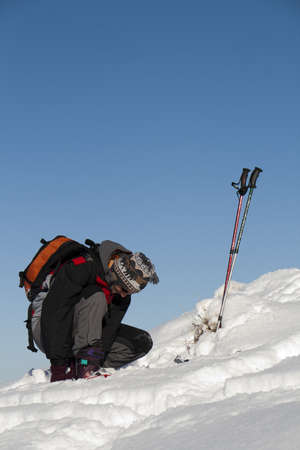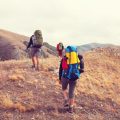1. Preparing for a Leave No Trace Adventure
Start with Smart Planning
Before you hit the trail, setting yourself up for a successful Leave No Trace (LNT) adventure starts at home. Good planning not only protects the outdoors but also helps you avoid unexpected problems on your trip. Here’s how to make sure your journey from the trailhead to the summit follows LNT principles every step of the way.
Research Local Regulations and Guidelines
Every park or wilderness area in the U.S. can have its own rules and recommendations. Some trails might require permits, have specific camping zones, or even seasonal closures to protect wildlife. Take time to check:
| What to Check | Where to Find It |
|---|---|
| Permit requirements | Official park websites or visitor centers |
| Fire restrictions | US Forest Service updates or local ranger stations |
| Trail conditions and closures | Online forums, social media groups, or recent trip reports |
| Wildlife advisories | Trailhead signs or local agencies’ alerts |
Packing the Right Gear with LNT in Mind
Packing light is important, but so is making sure you’re prepared to minimize your impact. Here are some essentials that support Leave No Trace practices:
- Reusable water bottles and food containers: Reduce single-use plastics and trash.
- Trowel and toilet paper in a baggie: For proper waste disposal if bathrooms aren’t available.
- Map, compass, or GPS: Prevents getting lost and creating new “social trails.”
- Sturdy shoes and weather-appropriate clothing: Keeps you on established paths without needing to bushwhack.
- Small trash bag: Pack out all your garbage—“If you packed it in, pack it out.”
- Bears spray or bear canister: Required in some areas to keep both you and wildlife safe.
Know Your Environment Before You Go
The American landscape is diverse—from Rocky Mountain snowfields to Arizona deserts. Take a few moments to understand what makes your destination unique:
- Ecosystem type (forest, alpine, desert): Each has different needs when it comes to minimizing impact.
- Weather patterns: Being ready for sudden changes helps you stay safe and stick to trails.
- Sensitive habitats: Learn where rare plants grow or wildlife nests so you can give them space.
Your Pre-Trip LNT Checklist
| LNT Task | Status (Check When Done) |
|---|---|
| Reviewed area regulations and secured permits if needed | ☐ |
| Packed out all necessary gear for waste and trash management | ☐ |
| Brought maps/GPS for navigation on official trails only | ☐ |
| Read about local flora/fauna and sensitive sites | ☐ |
| Told someone your trip plans for safety | ☐ |
Taking these simple steps before you leave home ensures that both you and the wild places you visit will stay safe—and beautiful—for years to come.
2. Mindful Trail Etiquette from the Trailhead
Understanding Your Role at the Trailhead
Before you even take your first step onto the trail, practicing Leave No Trace starts right at the trailhead. The choices you make here set the tone for your entire hike and impact everyone who comes after you. Being respectful and considerate helps preserve these natural places for future generations.
Best Practices for Starting Your Hike
| Action | Why It Matters | How to Do It Right |
|---|---|---|
| Stay on Marked Trails | Protects plants and prevents soil erosion | Always use designated paths; don’t create shortcuts or walk around muddy spots |
| Yield to Others | Keeps everyone safe and happy on busy trails | Uphill hikers have the right of way; step aside for faster groups or horseback riders |
| Pack In, Pack Out | Keeps trails clean for everyone | Bring a trash bag and carry out all your garbage, including food scraps and tissues |
| Keep Noise Down | Protects wildlife and lets others enjoy nature’s sounds | Avoid loud music or shouting; speak quietly with your group |
| Respect Wildlife and Plants | Prevents disturbance and preserves natural habitats | Observe from a distance; never feed animals or pick flowers/plants |
| Minimize Group Size Impact | Makes less of a mark on narrow trails and sensitive areas | If hiking in a group, walk single file and avoid blocking the trail for others |
Key Trail Etiquette Tips for U.S. Hikers
- Pet Policy: If you bring your dog, keep it leashed at all times and pick up after it. Many U.S. parks require this by law.
- Trail Registers: Some American trails have logbooks—sign in to help rangers track trail usage and for safety reasons.
- Packing Gear: Double-check that you have essentials like water, snacks, navigation tools, and a basic first aid kit before leaving the trailhead.
- Avoid Crowding: If a parking lot is full, consider another trail or come back later to prevent overuse of popular spots.
- Share the Experience: Greet fellow hikers with a friendly “hello” or a wave—it’s a welcoming tradition on U.S. trails!
Remember: Every small action counts when it comes to Leave No Trace. Setting good habits from the very start helps protect our wild places for everyone to enjoy.

3. Responsible Waste Management on the Trail
Step-by-Step Guidance for Managing Waste
Keeping our trails clean is a big part of Leave No Trace. When youre hiking from the trailhead all the way to the summit, you can make a real difference by managing waste the right way. Here’s how you can handle all types of waste so everyone can enjoy the outdoors.
Packing Out Trash: What Goes In, Comes Out
Anything you bring in—snack wrappers, apple cores, or even that tiny corner of an energy bar wrapper—should leave with you. Follow these steps to make it easy:
- Bring a dedicated trash bag: Use a zip-top bag or reusable stuff sack for all your trash.
- Check your rest spots: Before leaving any break area, scan for wrappers, bottle caps, and bits of packaging.
- Pack out pet waste: If you’re hiking with a dog, bring extra bags and carry their waste out too.
Proper Disposal of Human Waste
If there are no toilets available, here’s what you should do:
| Situation | Recommended Action |
|---|---|
| No restroom at trailhead or along trail | Use a portable toilet (like a WAG bag) or dig a cat hole 6-8 inches deep and at least 200 feet away from water sources, trails, and campsites. |
| Using toilet paper | Pack it out in a zip-top bag. Used tissues don’t decompose quickly and are unsightly for others. |
| Washing hands after | Use hand sanitizer or biodegradable soap away from water sources. |
Minimizing Micro-Trash Along the Way
Tiny bits of trash—like corners of snack wrappers, twist ties, or stray pieces of tape—are called micro-trash. They’re easy to miss but make a big impact on the environment. Here’s how to stay on top of them:
- Open food carefully: Tear packages at home if possible; use a small pouch for micro-trash while hiking.
- Double-check your gear: Look inside backpacks and pockets before leaving each stop.
- Pick up what others missed: If you see micro-trash, grab it—even if it’s not yours!
Your Responsible Waste Checklist
| Task | Done? |
|---|---|
| Brought enough trash bags | □ |
| Packed out all garbage (yours and found) | □ |
| Packed out used toilet paper/tissues | □ |
| Took care of micro-trash | □ |
| Packed out pet waste (if needed) | □ |
By following these steps every time you hit the trail, you’ll help keep America’s wild places pristine and welcoming for everyone who comes after you.
4. Respecting Wildlife and Natural Surroundings
Tips for Observing Wildlife from a Distance
One of the best parts of hiking in America’s wild places is spotting animals in their natural habitat. To keep wildlife safe and undisturbed, always observe them quietly from a distance. Bring a pair of binoculars so you can watch without getting too close. Avoid making loud noises or sudden movements, and never try to feed or touch any animal—even if they seem friendly.
| Wildlife Encounter | What to Do |
|---|---|
| Deer, elk, or moose on trail | Stop and wait until they move away; do not approach. |
| Nesting birds or chicks | Keep your distance and use zoom lenses for photos. |
| Bears or predators | Back away slowly and calmly; never run or leave food behind. |
Protecting Fragile Habitats
Many trails pass through sensitive environments like alpine meadows, wetlands, or desert crusts. These areas are easily damaged by trampling, so always stay on the established path, even if it’s muddy or snow-covered. If you need to step aside to let others pass, pick durable surfaces like rocks or gravel instead of plants. This helps keep habitats healthy for years to come.
Common Fragile Areas and How to Protect Them
| Habitat Type | How to Minimize Impact |
|---|---|
| Alpine Meadows | Avoid stepping off trail; delicate wildflowers take years to recover. |
| Wetlands & Marshes | Use boardwalks if available; don’t create new paths. |
| Cryptobiotic Soil (Desert) | Stay on marked trails; this soil is vital for ecosystem health. |
Avoiding Practices That Disrupt Local Ecosystems
Your actions can have a big impact on the balance of nature along the trail. Avoid picking flowers, collecting rocks, or stacking stones (“cairns”) unless they’re part of official trail markers. Keep pets leashed at all times—they can stress wildlife and damage habitats if allowed to roam freely. Be mindful not to introduce non-native plants or insects by cleaning your boots before and after your hike.
Quick Do’s and Don’ts for Protecting Nature on the Trail:
- Do: Take only photos; leave everything else as you found it.
- Don’t: Feed wildlife—human food can harm them.
- Do: Use existing campsites and fire rings where allowed.
- Don’t: Play loud music or make excessive noise—it disturbs both animals and fellow hikers.
- Do: Dispose of waste properly; pack out all trash, including food scraps and biodegradable items.
5. Leaving the Summit and Return Practices
How to Leave the Area as Pristine as You Found It
Reaching the summit is an incredible feeling, but your responsibility to Leave No Trace (LNT) doesn’t stop there. Heading back down is just as important for preserving the wild beauty for others and future generations. Here’s how you can ensure you leave the area just as pristine on your return journey.
Restore Any Disturbed Areas
If you or your group accidentally disturbed rocks, plants, or soil during your ascent, take a moment before leaving the summit to restore things as best you can. This could mean gently moving rocks back to where they were or brushing out boot prints from sandy or soft areas.
| Action | Why It Matters |
|---|---|
| Replace rocks and logs | Prevents erosion and protects plant life under rocks/logs |
| Smooth out footprints in sensitive areas | Keeps fragile environments like alpine meadows intact |
| Pack out all trash (even small things like fruit peels) | Avoids attracting wildlife and keeps the site clean for everyone |
Take Only Memories—Leave What You Find
It might be tempting to pick a wildflower or collect a unique rock, but LNT asks us to leave these treasures behind. Take photos and soak in the view instead! Not only does this preserve nature, but it also allows others to experience the same wonder.
Simple Dos and Donts:
- Do: Snap photos, jot notes in a journal, share stories with friends.
- Dont: Take plants, rocks, or historical artifacts from the area.
Spread the Leave No Trace Ethic on Your Way Back
Your influence matters! As you descend, model responsible behavior for other hikers—pick up stray litter if you see it, stay on marked trails even if shortcuts look tempting, and offer friendly reminders about LNT when appropriate. A simple “Hey, let’s keep this spot beautiful!” goes a long way.
| LNT Practice | How to Apply While Leaving |
|---|---|
| Stay on trail | Avoid creating new paths that erode fragile terrain. |
| Minimize noise | Let wildlife enjoy their home undisturbed. |
| Pick up litter—even if it’s not yours! | Leave the trail better than you found it. |
| Share LNT tips with fellow hikers (politely!) | Help spread good habits throughout the hiking community. |
The summit isn’t just a destination—it’s part of a journey where every action counts. Restoring disturbed areas, taking only memories, and setting an example ensures these wild places stay beautiful for everyone who follows in your footsteps.


